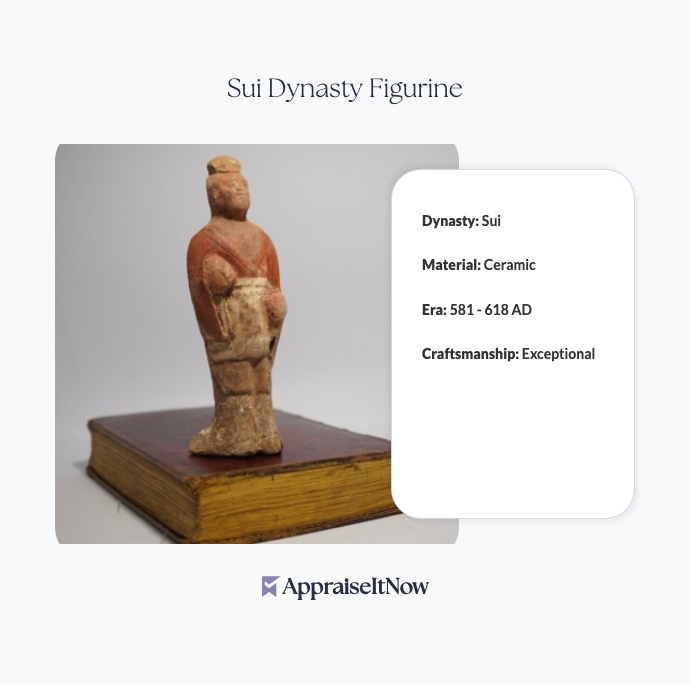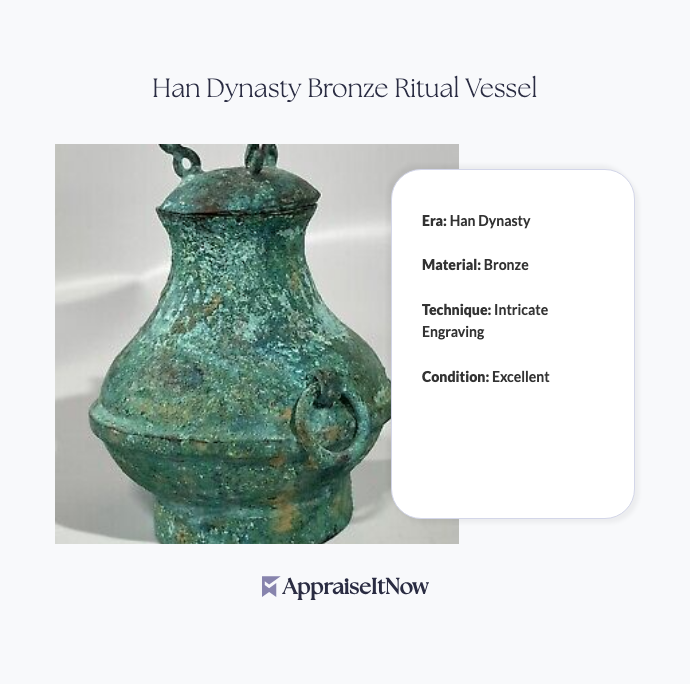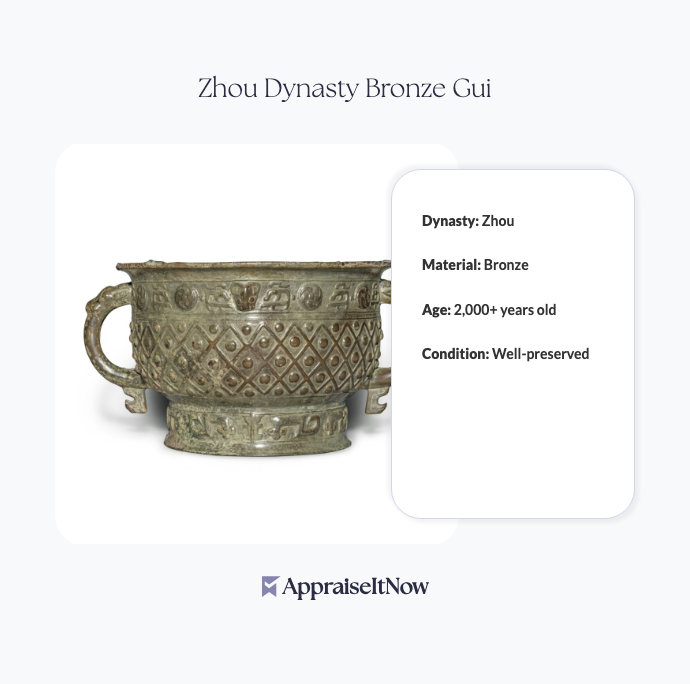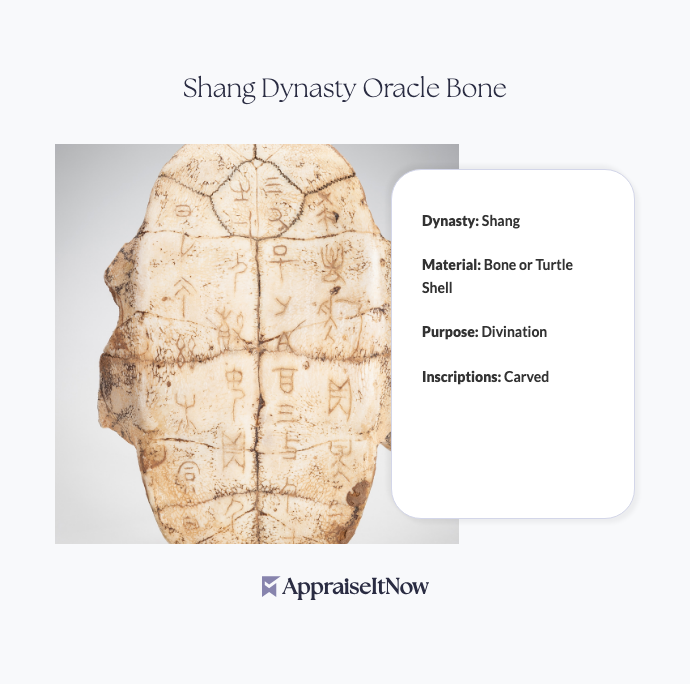<h1>How to Get Your Warring States Bronze Ding Appraised</h1>
<p>A <strong>Warring States Bronze Ding</strong> is one of the most significant and sought-after artifacts from ancient China. Dating back to 475–221 BC, these ritual vessels command appraisal values between <strong>$45,000 and $65,000</strong> depending on condition, provenance, and authenticity. Whether you've inherited one, acquired it through a collection, or are considering a purchase, understanding what drives its value and how professional appraisers evaluate it will help you make informed decisions about ownership, insurance, and potential sale.</p>
<h2>Why Warring States Bronze Dings Command Premium Valuations</h2>
<p>Your bronze ding holds significance beyond its material composition. These ancient ritual vessels served ceremonial purposes—offering food and libations to ancestors—making them central to Zhou Dynasty religious and social practices. The craftsmanship alone justifies substantial appraisal values. <strong>Artisans employed sophisticated casting techniques</strong> to create the vessel's distinctive broad, rounded body supported by three sturdy legs, each adorned with intricate motifs and patterns that reflect the exceptional metallurgical knowledge of the period.</p>
<p>The Warring States period (475–221 BC) saw a flourishing of bronze-working techniques that distinguished later vessels from earlier Zhou productions. Your ding's rarity stems partly from survival rates—not all bronze vessels survived millennia of environmental exposure and historical upheaval. A well-preserved example represents an irreplaceable window into ancient Chinese cultural heritage, which directly translates to substantial monetary and historical value.</p>
<h2>Authentication Methods That Establish Credibility and Value</h2>
<p>Professional appraisers employ multiple authentication techniques to verify authenticity and justify valuations. Understanding these methods helps you appreciate what makes your ding genuinely valuable versus merely appearing old.</p>
<p><strong>Patina analysis</strong> examines the surface oxidation patterns developed over centuries. Genuine bronze dings develop characteristic color variations and mineral deposits that are extraordinarily difficult to artificially age. Experienced appraisers can distinguish authentic patination from recent treatments by studying microscopic surface features and the consistency of corrosion patterns across the vessel's structure.</p>
<p><strong>Metallurgical testing</strong> analyzes the alloy composition to confirm period-appropriate tin and copper ratios. Warring States bronzes typically contain 5-15% tin mixed with copper, along with trace elements reflecting specific mining regions and smelting practices. <strong>XRF (X-ray fluorescence) testing</strong> provides non-destructive elemental analysis, identifying the precise metal composition without damaging the artifact. This technology has revolutionized authentication in the <a href="/blog/appraising-artifacts-and-antiquities-evaluating-historical-finds">antiques and antiquities appraisal</a> field.</p>
<p><strong>Stylistic comparison</strong> evaluates decorative motifs, vessel proportions, and casting techniques against documented museum examples and archaeological records. Your ding's design elements—taotie masks, scroll patterns, or inscribed characters—should align with known Warring States conventions. <strong>Thermoluminescence testing</strong> can estimate firing dates for certain ceramic vessels, though bronze dings require alternative approaches.</p>
<div class="callout tip"><p><strong>Authentication Insight</strong></p>
<p>Professional appraisers typically employ multiple authentication methods rather than relying on single indicators. This convergent approach strengthens confidence in your ding's authenticity and directly supports higher valuations.</p></div>
<h2>Provenance Documentation and Its Impact on Valuation</h2>
<p>Provenance—the documented ownership and exhibition history of your bronze ding—significantly affects its appraised value. Museums, auction houses, and serious collectors maintain meticulous records that enhance confidence and financial valuation. When exploring the <a href="/blog/exploring-the-role-of-provenance-in-art-appraisals-assessing-historical-significance">role of provenance in art appraisals</a>, understand that each documented previous owner strengthens your ding's credibility.</p>
<p>Your appraisal should include detailed provenance research. Where did you acquire the piece? Does it carry certificates from previous dealers or collectors? Has it appeared in exhibition catalogs or scholarly publications? Each documented connection to reputable institutions or collectors adds financial value. Conversely, gaps in ownership history—especially for items that surfaced recently without clear sourcing—may reduce appraised values by 20-40% until provenance gaps are satisfactorily explained through additional research.</p>
<p>Export documentation also matters. Many ancient Chinese bronzes were legitimately exported during the early 20th century before restrictive cultural property laws took effect. Collectors often ask about the legal and export considerations surrounding ancient Chinese bronzes. Understanding import/export permits, UNESCO regulations, and national cultural property laws helps establish whether your ding's current ownership is legally sound, which directly impacts insurability and resale viability.</p>
<h2>Condition Assessment and Its Effect on Market Value</h2>
<p>The condition of your Warring States Bronze Ding substantially determines its position within the $45,000–$65,000 range. Professional appraisers evaluate specific condition issues systematically.</p>
<p><strong>Corrosion patterns</strong> tell the vessel's environmental history. Light surface patination actually enhances authenticity and appeal to sophisticated collectors. However, active corrosion (where the bronze continues deteriorating) or deep pitting may indicate improper storage or environmental damage. <strong>Casting defects</strong>—bubbles, incomplete fills, or structural weaknesses visible in the metal—were sometimes present even in antiquity and don't necessarily diminish value if they document authentic casting techniques.</p>
<p><strong>Repair history</strong> requires careful evaluation. Ancient pieces were sometimes repaired in antiquity using different metals or techniques. Professional restoration performed within the last century generally doesn't damage value if properly documented. However, aggressive modern restoration that obscures original patina or alters design elements can reduce valuations significantly. <strong>Missing parts</strong>, whether legs, handles, or decorative elements, proportionally reduce value—typically 15-30% per substantial missing component depending on visibility and functional importance.</p>
<p>Understanding how restoration and conservation impact valuations is critical when <a href="/blog/appraising-fine-bronze-sculptures-valuing-metal-artistic-creations">appraising bronze sculptures and metal artworks</a>. Your appraisal should clearly document all condition issues and any restoration work with supporting photographs and technical notes.</p>
<div class="callout note"><p><strong>Condition Matters</strong></p>
<p>A bronze ding with excellent provenance but significant corrosion issues might appraise at $45,000–$50,000, while a comparable example in pristine condition could reach $60,000–$65,000.</p></div>
<h2>Recent Market Trends and Auction Results</h2>
<p>What are collectors actually paying for Warring States bronzes? Market data from major auction houses reveals consistent demand and appreciating values over the past decade. Understanding recent auction results helps establish realistic expectations for your ding's current market value.</p>
<p>Chinese bronze vessels have appreciated approximately 8-12% annually across the past 15 years, outpacing general art market growth. However, values concentrate among museum-quality examples with impeccable provenance. A 2022 Christie's auction featured a comparable Warring States bronze ding that sold for <strong>$58,000</strong> after presale estimates of $40,000–$50,000, demonstrating collector appetite for exceptional examples. Sotheby's reported similar strength in their Asian antiquities auctions, with rarity and condition driving final prices above pre-sale ranges.</p>
<p>The broader market for <a href="/blog/appraising-asian-art-and-antiques-understanding-cultural-significance-and-value">Asian art and antiques</a> shows particular strength in Chinese ceremonial bronzes. Collectors increasingly recognize bronze vessels as more stable investments compared to jade or ceramics, where fakes proliferate. This market dynamic supports your ding's valuation potential.</p>
<p>Regional markets vary. Hong Kong and mainland China show stronger demand and higher price multiples than Western markets, reflecting cultural affinity and collector wealth concentration. When considering future sale or insurance, understanding geographic market dynamics helps establish appropriate valuations.</p>
<h2>Legal Considerations for Ownership and Sale</h2>
<p>Before finalizing your appraisal or pursuing a sale, address legal requirements surrounding ancient Chinese bronze ownership. Many countries restrict export of cultural artifacts, and some pieces carry illegal provenance if they were smuggled from China after restrictive laws took effect.</p>
<p>Your appraisal should confirm that your ding was legally imported and can be legally owned in your jurisdiction. Reputable appraisers familiar with <a href="/blog/evaluating-cultural-heritage-appraisals-of-indigenous-art-and-artifacts">cultural heritage appraisals</a> understand current UNESCO agreements and national regulations affecting ancient Chinese bronzes. If you're considering international sale or auction, obtaining export permits before listing becomes essential. These legal considerations don't reduce your ding's intrinsic value, but they do affect marketability and insurance coverage.</p>
<h2>Typical Uses for Professional Bronze Ding Appraisals</h2>
<p>Why do collectors commission professional appraisals of Warring States bronzes? The purposes vary significantly and affect appraisal scope and documentation requirements.</p>
<p><strong>Insurance appraisals</strong> establish replacement value for coverage purposes. Your insurer needs certified documentation justifying claimed value, especially for items worth $45,000+. <strong>Estate settlement appraisals</strong> facilitate proper asset division among heirs, often required by probate courts. <strong>Donation appraisals</strong> support tax deduction claims when gifting pieces to museums or educational institutions. <strong>Sale appraisals</strong> provide buyer confidence and auction house documentation when consigning to major houses. <strong>Litigation support</strong> involves expert testimony establishing fair market value for disputes or divorce proceedings.</p>
<p>Each appraisal type requires different documentation emphasis, but all benefit from the comprehensive expertise that credentialed appraisers provide.</p>
<h2>Understanding Appraisal Fees and Timeframes</h2>
<p>What does a Warring States bronze ding appraisal actually cost? High-value antiquities command higher appraisal fees reflecting the expertise required and documentation intensity. Expect to invest <strong>$500–$2,000</strong> for a comprehensive appraisal of a bronze ding in the $45,000–$65,000 range.</p>
<p>Factors driving appraisal costs include authentication testing complexity, provenance research requirements, condition assessment scope, and documentation thoroughness. Pieces requiring XRF testing, thermoluminescence analysis, or extensive research typically command premium fees but deliver corresponding value protection. Your appraisal fee represents investment in professional credibility that facilitates insurance claims, auction success, or confident personal enjoyment of ownership.</p>
<p>Turnaround time typically ranges from 2–6 weeks depending on testing requirements and appraiser availability. When seeking appraisal services through platforms like <strong>AppraiseItNow</strong>, you'll connect with credentialed experts (AAA, ISA, ASA, CAGA, AMEA certified) who specialize in Asian antiquities and provide USPAP-compliant documentation.</p>
<div class="callout tip"><p><strong>Appraisal Planning</strong></p>
<p>Schedule your appraisal well in advance of insurance renewals, planned sales, or estate settlement deadlines. Rush services may incur additional fees but ensure documentation arrives when needed.</p></div>
<h2>Choosing the Right Appraiser for Your Bronze Ding</h2>
<p>Not all appraisers possess equivalent expertise in ancient Chinese bronzes. When selecting an appraiser, verify credentials in Asian art and antiquities. Look for professionals with documented experience appraising museum collections, auction house experience, or published expertise in Warring States metallurgy and design.</p>
<p>Your appraiser should explain authentication methodology, provide detailed condition photography, and deliver comprehensive written reports suitable for insurance companies or legal proceedings. Professional platforms connecting you with specialized appraisers ensure access to appropriate expertise without requiring you to identify experts through trial and error.</p>
<div class="callout note"><p><strong>Key Takeaway</strong></p>
<p>A professional appraisal of your Warring States Bronze Ding provides essential documentation establishing authentic value within the $45,000–$65,000 range. Whether you need insurance protection, estate planning documentation, or confident ownership knowledge, certified appraisers deliver the expertise and credibility your significant artifact deserves.</p></div>
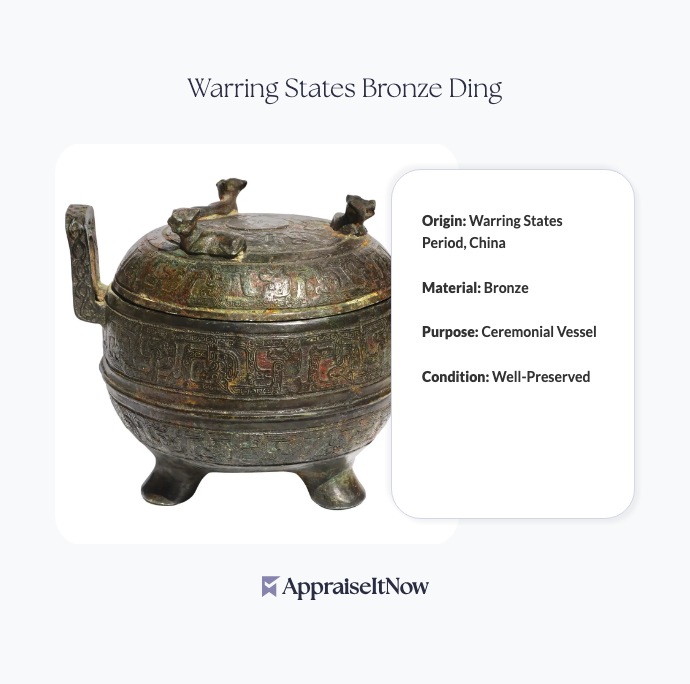






.avif)




